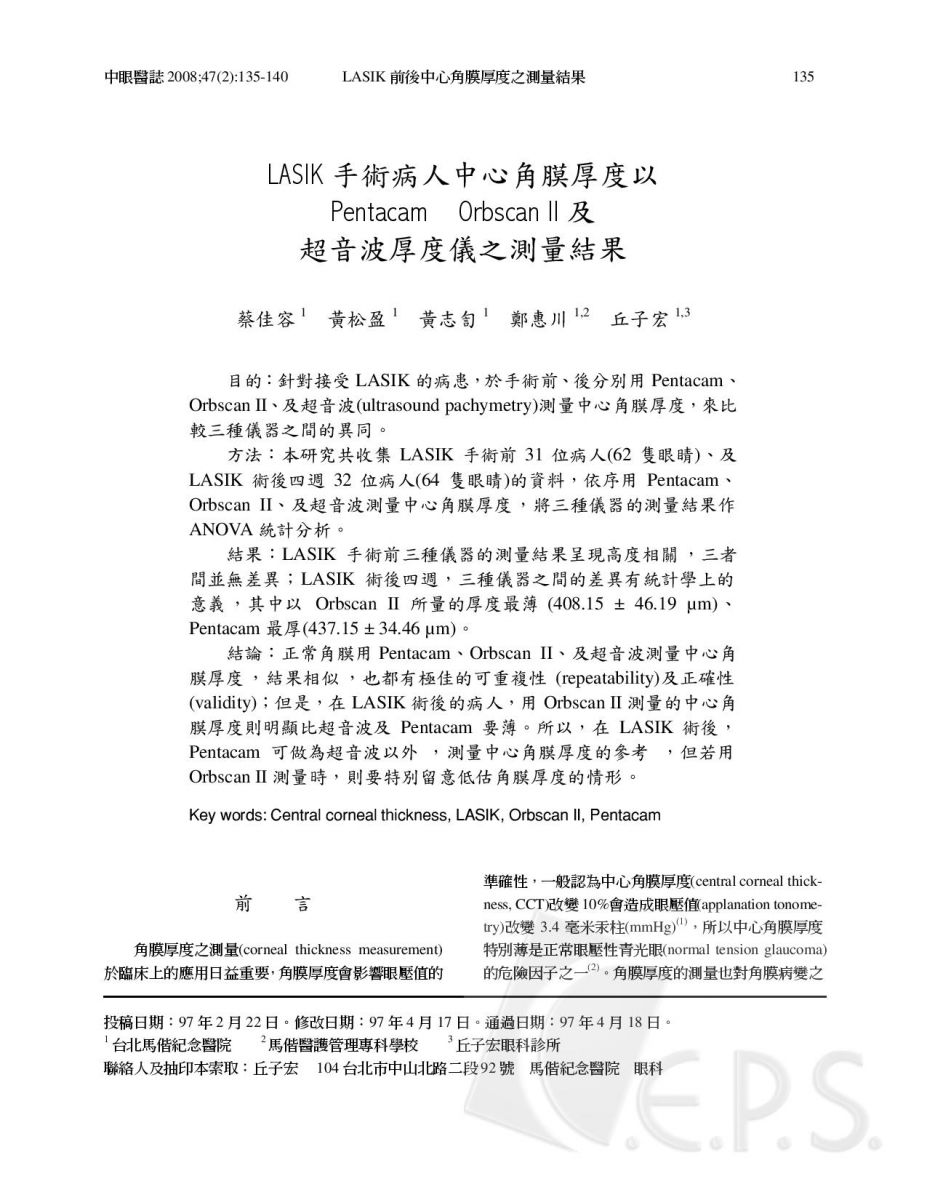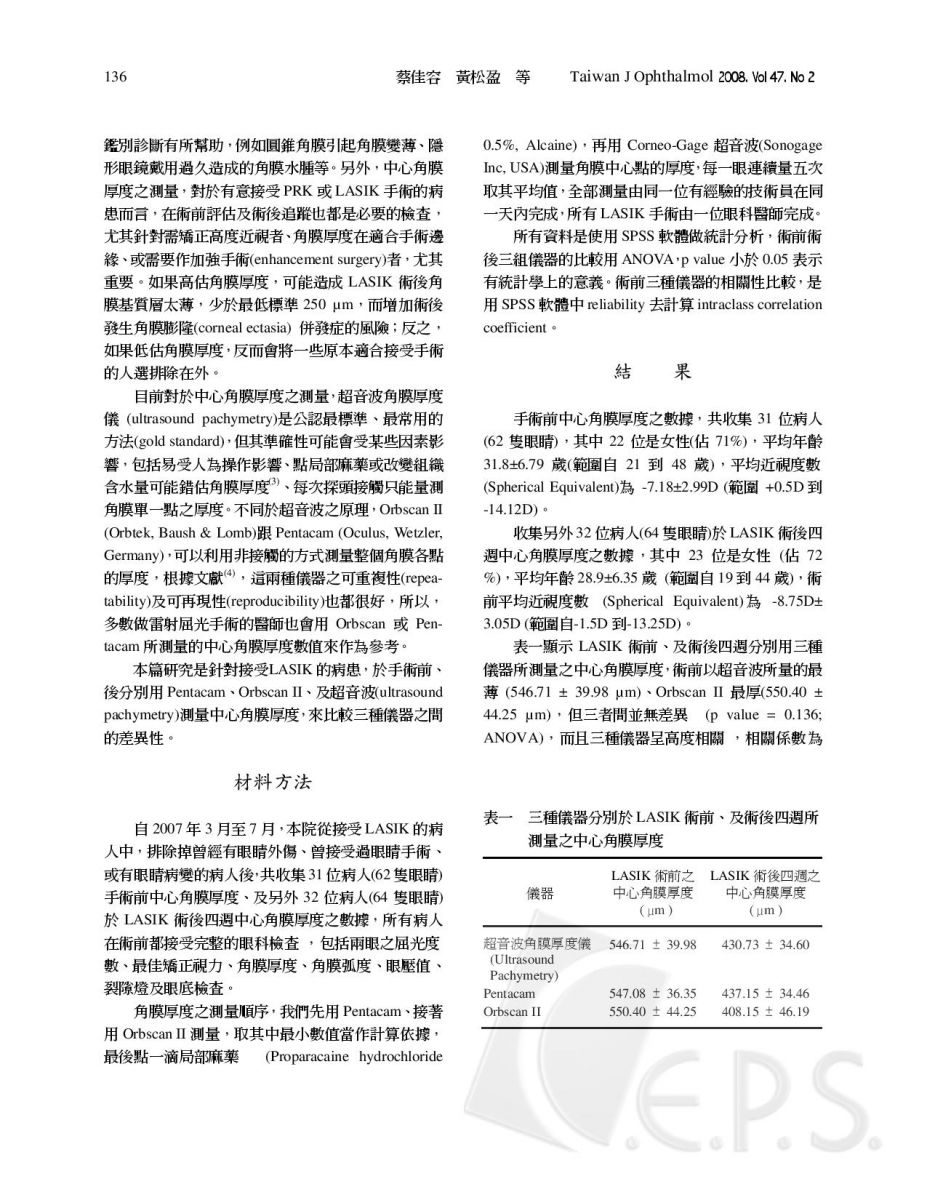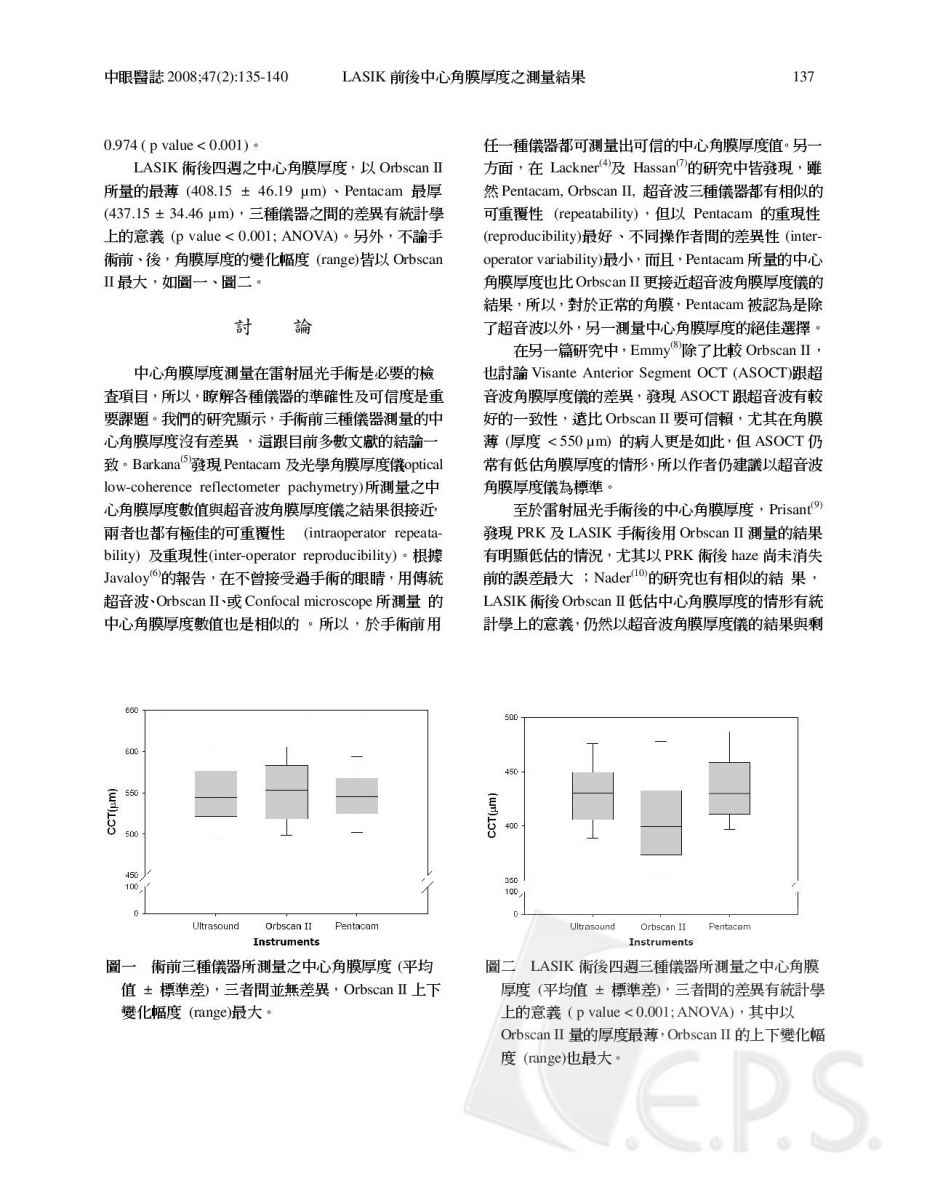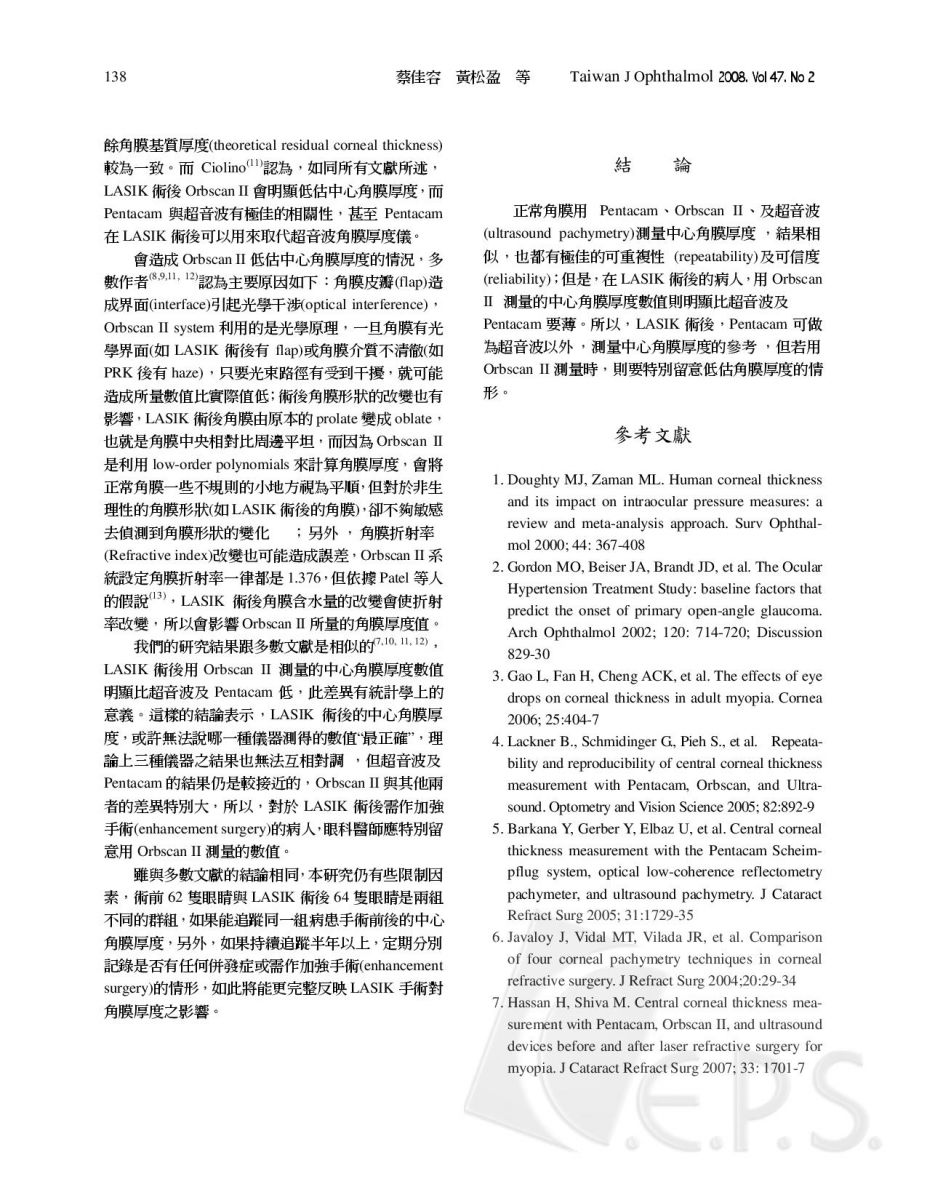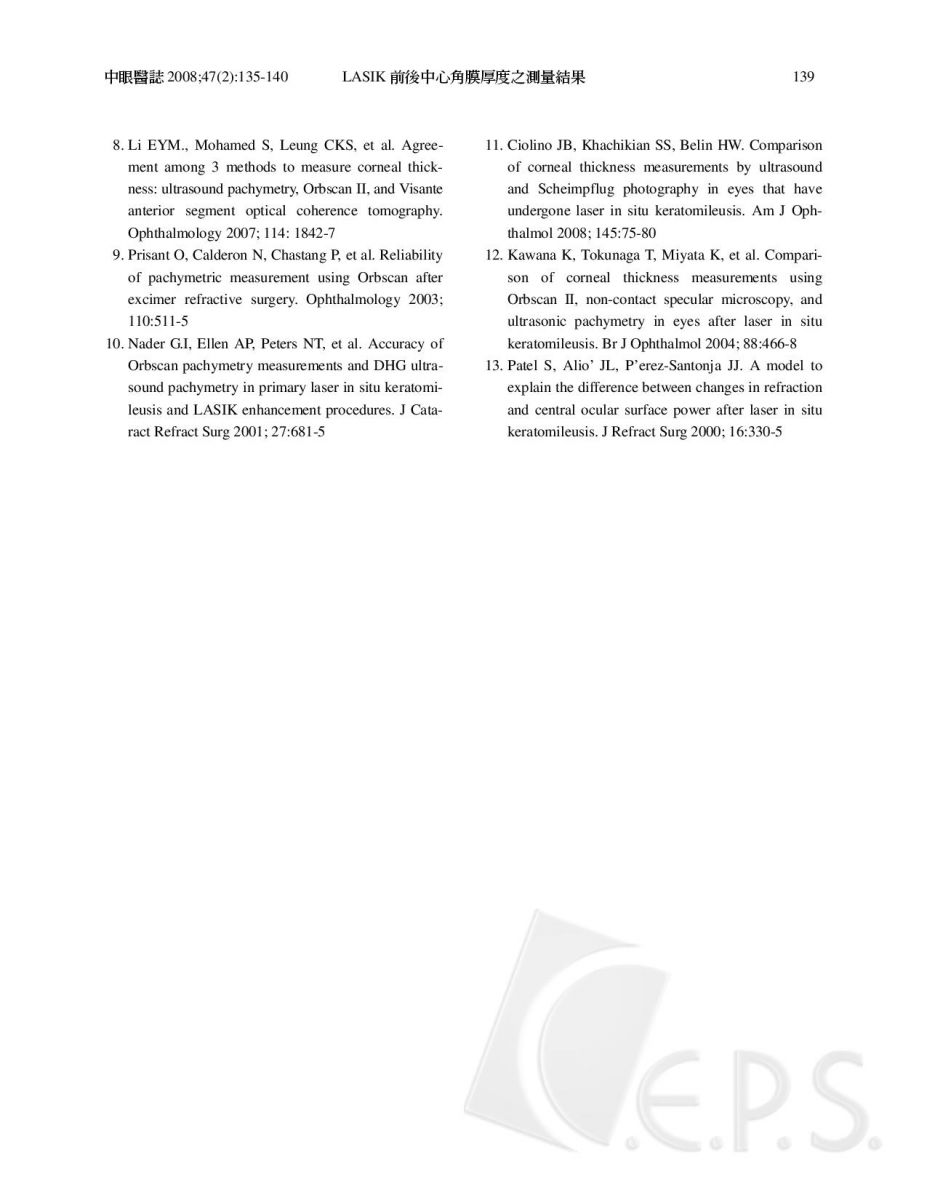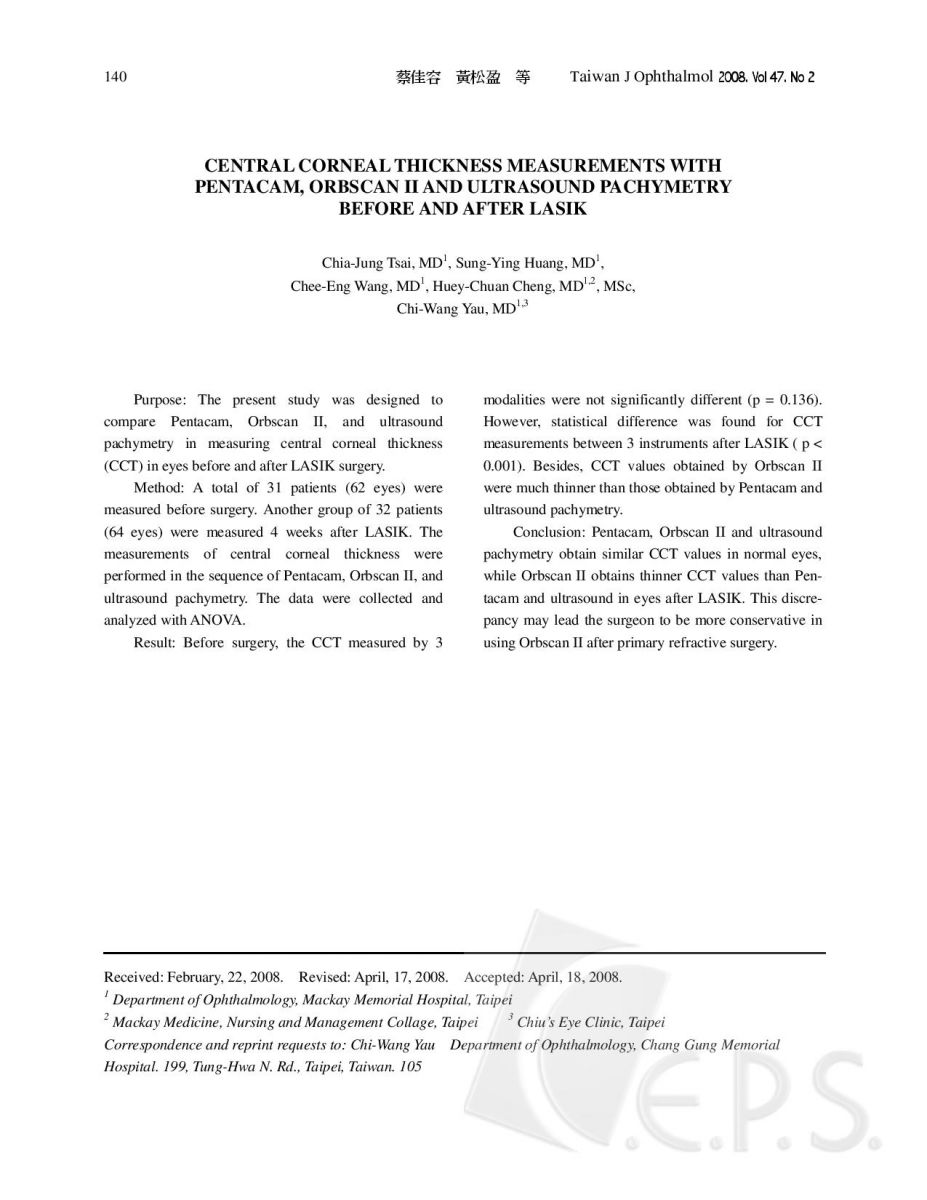|
Patients and Methods:
Corneo-Gage( Sonogage Inc,USA) was used for ultrasound pachmetry. After surface anesthesia with one drop Alcaine(Alcon), three measurements was taken at the central cornea in sitting position. The average was used as CCT. The operation of Orbscan II (Bausch & Lomb) and Pentacam (Oculus) was performed according to the operation manual of the instruments. The first examination was chose if the operating procedure was correct. For every patient, the ultrasound pachmetry was done as the last procedure to avoid interference of the other two instruments. Totally 31 patients (62 eyes) before surgery were measured. Another group of 32 patients (64 eyes), one month after LASIK were measured as well. One kind of measuring method was performed by one experienced technician only to avoid interoperator difference. Statistical analysis was performed with ANOVA. The level of significance was P=0.05.
|
|
Discussion:
CCT measurement is important for patients undergoing refractive surgery. The accuracy and reliability of the measuring instruments are essential part to be evaluated. The present study showed that CCT measured by three instruments were not significantly different from one another in patients before refractive surgery. Barkana found the CCT values obtained with Pentacam were similar to those obtained with optical low-coherence reflctometry pachymeter and ultrasound pachymeter. Javaloy reported that corneal thickness was similar using conventional ultrasound, Orbscan II, or confocal microscope in non-operated eyes. According to the above findings, any one of three instruments used in the present study may give reliable CCT values for pre-operative evaluation. However, Lackner in his report found that in normal corneas the Pentacam measured CCT values was closer to ultrasound pachymetry as compare to Orbscan.
Previous study by Prisant pointed out that Orbscan pachymetric values may be underestimated and less accurate after LASIK and PRK. Our study also showed that CCT values obtained by Orbscan was thinner than obtained by ultrasound pachymeter and Pentacam. But statistical analysis have found that the difference of the three instruments was significant from one and other. These findings imply that may be none of the three instruments obtains true CCT value in post-LASIK corneas. In case of enhancement procedure after primary refractive surgery, this uncertainty may lead the surgeon to be more conservative especially in using Orbscan because it gives thinnest value.
In conclusion, three modalities obtain similar CCT values in normal cornea while the Orbscan may obtain thinner CCT values than the Pentacam and ultrasound pachymetry in patients after LASIK.
|
|
References:
1. Barkana Y, Gerber Y, Elbaz U, et al. Central corneal thickness measurement with the Pentacam Scheimpflug system, optical low-coherence reflectometry pachymeter, and ultrasound pachymetry. J Cataract Refract Surg 2005:31:1729-1735.
2. Javaloy J, Vidal MT, Villada JR, et al. Comparison of Four Corneal Pachymetry Techniques in Corneal Refractive Surgery. J Refract Surg 2004;20:29-34.
3Lackner B, Schmidinger G, Pieh S, et al. Repeatability and Reproducibility of Central Corneal Thickness Measurement With Pentacam, Orbscan, and Ultrasound. Optometry and Vision Science 2005;82:892-899.
4 Prisant O, Calderon N, Chastang P, et al. Reliability of Pachymetric Measurement Using Orbscan after Excimer Refractive Surgery. Ophthalmology 2003;110:511-515.
|

